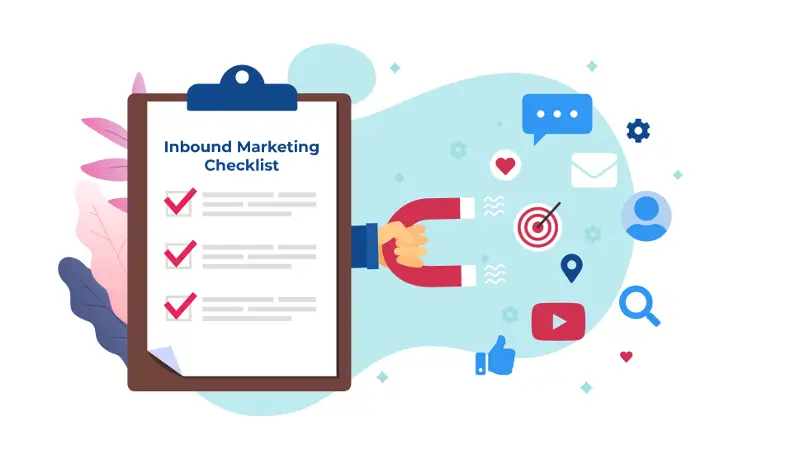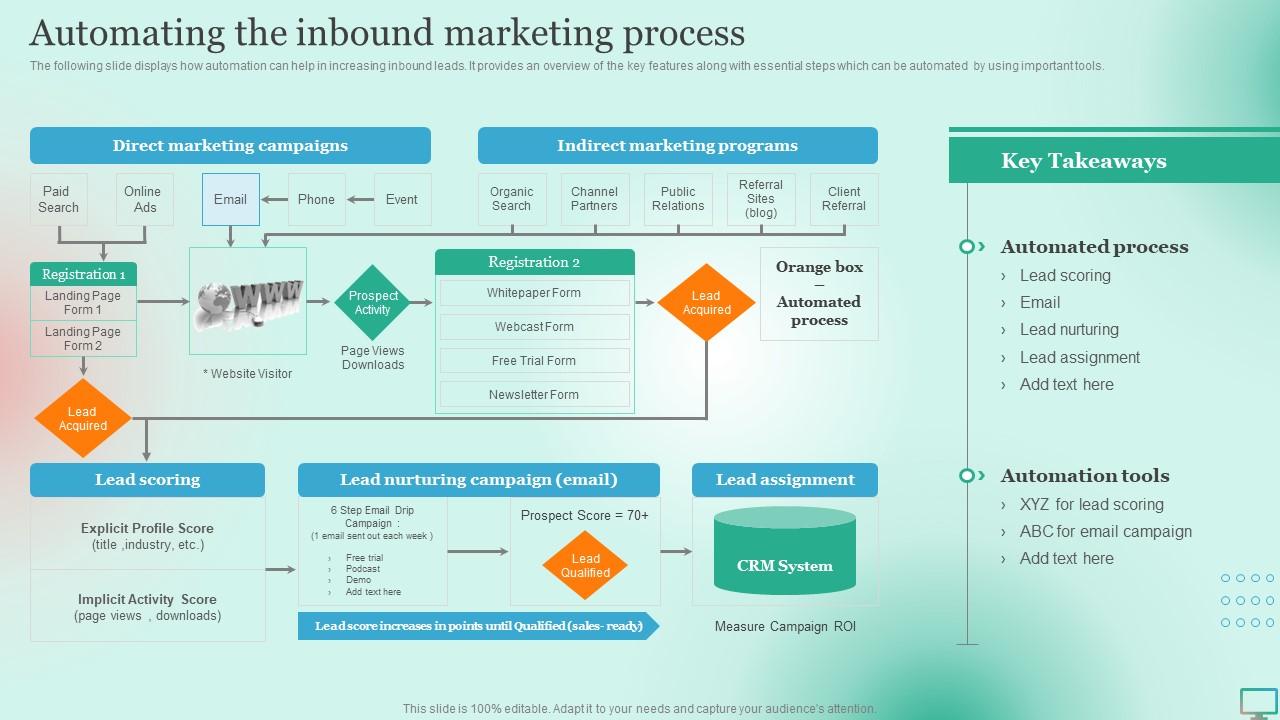Introduction
In the dynamic world of digital marketing, marketers are constantly seeking innovative ways to attract, engage, and convert customers. One of the most transformative strategies in recent years has been the integration of marketing automation within inbound marketing. These two powerful forces, when combined, create a seamless, data-driven approach to nurturing leads and driving revenue. Marketing automation allows for efficient scaling, personalization, and tracking of marketing efforts, while inbound marketing ensures that content is valuable and relevant to the target audience. Understanding how these two disciplines work together is essential for any business looking to thrive in the competitive digital landscape.
The Foundation Of Inbound Marketing

Inbound marketing is a methodology designed to draw customers in through the creation of valuable content and experiences tailored to them. Rather than pushing products or services, inbound marketing focuses on attracting potential customers through channels like blogs, search engines, and social media. The goal is to provide useful information and insights that help consumers solve problems or satisfy needs. At the heart of inbound marketing is the buyer’s journey, which includes stages such as awareness, consideration, and decision. Each stage requires a different type of content and engagement strategy to effectively guide the prospect toward conversion. Content creation, search engine optimization, social media marketing, and email nurturing campaigns are all core components of a successful inbound strategy. By focusing on solving problems rather than selling, inbound marketing establishes trust and builds long-term relationships.
What Is Marketing Automation?
Marketing automation refers to the use of software platforms and technologies designed for marketing departments and organizations to more effectively market on multiple channels online and automate repetitive tasks. These tasks can include email marketing, social media posting, ad campaigns, lead nurturing, and performance tracking. By automating these processes, businesses can save time and resources while delivering personalized experiences to customers at scale. The key to effective marketing automation lies in setting up workflows that respond to user behavior and guide leads through the sales funnel. These workflows are driven by data and are designed to deliver the right message at the right time. When implemented properly, marketing automation can dramatically improve lead generation, customer retention, and ROI.
Aligning Automation With Inbound Strategy
The synergy between marketing automation and inbound marketing lies in their shared focus on personalization and value-driven engagement. While inbound marketing sets the stage with content that attracts and educates, marketing automation takes over by nurturing those leads with timely and relevant messages. This alignment starts with understanding the buyer personas and mapping out their journey. Once this is established, marketers can use automation tools to deliver content based on where a lead is in the funnel. For example, someone in the awareness stage might receive educational blog posts or ebooks, while someone in the decision stage might get a personalized product demo offer. This seamless transition from attraction to conversion is where the true power of combining marketing automation with inbound strategy becomes evident.
Lead Nurturing And Scoring
One of the most valuable aspects of marketing automation in the context of inbound marketing is lead nurturing. This involves building relationships with potential buyers at every stage of the sales funnel and through every step of the buyer’s journey. Lead nurturing strategies rely heavily on behavior-based automation. For instance, if a lead downloads a whitepaper on a specific topic, the system can trigger a series of follow-up emails related to that topic. Lead scoring adds another layer of sophistication by assigning values to different actions a lead takes. This score helps sales teams prioritize leads that are most likely to convert, ensuring that resources are focused on high-potential prospects. These automated systems allow businesses to scale their lead nurturing efforts without sacrificing personalization.
Email Marketing Automation
Email remains one of the most effective channels for inbound marketing, and when combined with automation, it becomes even more powerful. Automated email marketing enables marketers to send targeted messages based on user behavior, demographics, and preferences. Welcome emails, onboarding sequences, re-engagement campaigns, and post-purchase follow-ups are just a few examples of automated email workflows that can enhance the inbound marketing experience. These emails are not only timely but also tailored to the specific needs and interests of each recipient. By leveraging data from CRM systems and user interactions, automated emails can significantly improve engagement rates and conversions.
Content Personalization At Scale

In inbound marketing, content is king. But as businesses grow, it becomes challenging to maintain the level of personalization that customers expect. This is where marketing automation shines. Automation tools can segment audiences based on behavior, preferences, and engagement history to deliver highly personalized content at scale. Whether it’s dynamic website content, targeted email campaigns, or personalized product recommendations, automation ensures that each touchpoint is relevant and impactful. This level of personalization not only enhances the user experience but also increases the likelihood of conversion. In a crowded digital marketplace, relevance is a key differentiator, and automation makes it possible to maintain that relevance with minimal manual effort.
Integrating Crm With Marketing Automation
Customer Relationship Management (CRM) systems play a crucial role in the success of marketing automation in inbound strategies. By integrating marketing automation tools with a CRM, businesses can gain a 360-degree view of their customers and leads. This integration allows for seamless data sharing between sales and marketing teams, ensuring that everyone has access to the same information. It also enables more effective lead scoring, segmentation, and personalized communication. When a lead interacts with marketing content, that information is captured and used to inform future communications. This holistic approach not only improves internal collaboration but also enhances the customer experience.
Social Media And Marketing Automation
Social media is a vital component of inbound marketing, providing a platform to distribute content, engage with audiences, and build brand awareness. Marketing automation can streamline social media efforts by scheduling posts, monitoring engagement, and analyzing performance. Tools like HubSpot, Buffer, and Hootsuite offer automation features that help businesses maintain a consistent presence across social platforms. Automated responses and chatbots can also be used to engage with followers in real-time, providing instant support and information. By automating routine social media tasks, marketers can focus on strategy and creativity, while ensuring that their brand remains active and responsive online.
Analytics And Performance Tracking
One of the greatest benefits of combining marketing automation with inbound marketing is the ability to track and analyze performance in real-time. Automation platforms provide detailed analytics on email open rates, click-through rates, conversion rates, and more. These insights help marketers understand what’s working and what needs improvement. By continually analyzing data, businesses can refine their strategies to better meet the needs of their audience. Performance tracking also allows for A/B testing and optimization of campaigns, ensuring that every marketing effort is backed by data. This data-driven approach leads to more informed decisions and better results over time.
Improving Customer Retention With Automation
Inbound marketing doesn’t stop at the point of conversion. Retaining customers and turning them into advocates is equally important. Marketing automation can help businesses stay engaged with customers post-purchase through loyalty programs, feedback requests, and personalized content. Automated surveys can gather customer insights, while personalized offers can encourage repeat purchases. By maintaining regular, relevant communication, businesses can build stronger relationships and foster long-term loyalty. This ongoing engagement is a core principle of inbound marketing, and automation makes it scalable and efficient.
Challenges And Best Practices
While marketing automation offers numerous benefits, it’s not without challenges. One common issue is over-automation, where customers receive too many messages or irrelevant content. To avoid this, it’s important to regularly review and refine automation workflows. Maintaining clean and accurate data is also essential, as poor data quality can lead to mis-targeting and reduced effectiveness. Best practices for successful implementation include starting with clear goals, understanding your audience, creating quality content, and continuously monitoring performance. It’s also crucial to ensure alignment between marketing and sales teams to maximize the impact of automation efforts.
Case Studies And Real-World Examples

Many businesses have successfully integrated marketing automation into their inbound marketing strategies. For example, a SaaS company might use automation to guide new leads through a product education series, increasing trial-to-paid conversions. An e-commerce brand could automate abandoned cart emails, leading to significant recovery of lost sales. These case studies highlight the versatility and effectiveness of marketing automation in various industries. By examining these real-world examples, marketers can gain inspiration and practical insights into how automation can enhance their own inbound efforts.
Future Trends In Marketing Automation And Inbound Marketing
As technology evolves, so too will the capabilities of marketing automation. Artificial intelligence and machine learning are already being integrated into automation platforms, allowing for even more advanced personalization and predictive analytics. Voice search, chatbots, and conversational marketing are becoming increasingly popular, providing new ways to engage with audiences. Additionally, privacy regulations like GDPR and CCPA are shaping how businesses collect and use data, emphasizing the importance of ethical marketing practices. Staying ahead of these trends will be crucial for businesses looking to maintain a competitive edge. The future of marketing automation in inbound marketing lies in creating more human-like, meaningful interactions at scale.
Conclusion
Marketing automation and inbound marketing are a powerful combination that can transform how businesses attract, engage, and convert customers. By leveraging automation tools to deliver personalized, timely, and relevant content, marketers can enhance the buyer’s journey and drive better results. From lead nurturing and email marketing to social media management and performance tracking, automation adds efficiency and scalability to every aspect of inbound marketing. As the digital landscape continues to evolve, embracing these technologies and strategies will be essential for long-term success. Businesses that understand and implement the synergy between marketing automation and inbound marketing will be well-positioned to thrive in the modern marketplace.

